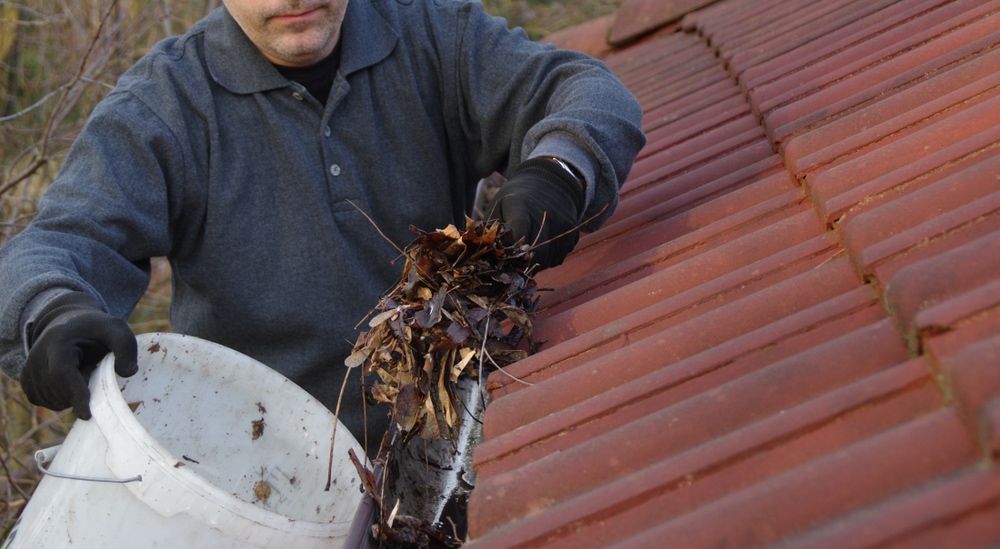How to Winterize Your California Home This Year
As the nation’s third-largest state, California has all kinds of climates within its expansive boundaries. January temperatures, for instance, can range from a high of 70°F and a low of 48°F around the Palm Springs desert area to a high of just 42°F and a low of a brutally cold 19°F in the snow-covered Lake Tahoe region.
In general, this sunny state is much milder than winters in most of the country, but it’s still at least chilly and quite possibly downright freezing cold, depending on where you live. At the very least, your home life could be fairly uncomfortable for months at a time.
Even in the mildest places, you might be so used to the warm temperatures that the winters can be something of a shock — especially if you’re not ready for them. Other winterization steps help keep your home out of disrepair — even in California areas where winter temperatures are the mildest. These annual chores will also help enhance the value of what’s probably your greatest investment.
So How Should I Winterize My California Home?
The key is to stay warm and comfortable by keeping your toasty furnace air in your home and the cold air out. Complete basic annual maintenance chores such as gutter cleaning and tree trimming to keep your home out of disrepair.
Here are some of the actions you should take this and every winter.
Have Your Furnace Inspected
It can be pretty tough waking up without a working furnace — even if you live in areas of the state that don’t typically drop to freezing temperatures. And if you do live where freezing night temperatures are a more common occurrence, cracked water pipes could be the very unfortunate reality of a faulty furnace.
That’s why it’s good to get into the habit of having an HVAC technician perform an annual inspection. It’s much better to find out you have a problem in, let’s say, October than in the middle of a frigid February night.
Try to schedule your inspection far enough in advance of the winter months that you won’t have to vie with everyone else for your furnace tech’s time.
Install Weather-stripping If You Have Drafts
Leaky windows can be a real pain, even if your winters are relatively mild. No one wants to feel a draft in January, regardless of where you live. And if you live where it’s colder, your energy bills will be higher if your home isn’t well insulated. That’s because your furnace will have to work harder to keep you comfortable.
Installing weather-stripping and insulation is usually fast and easy. You can check online videos showing how to do it effectively. As for the cost, it can be much less than what you might otherwise waste in energy bills.
Trim Tree Branches That Have Grown Over Your Roof
Overhanging branches drop leaves in the fall and that blocks your gutters and downspouts. If local weather conditions get cold enough to bring on sleet, the ice that clumps on tree branches could bring limbs down and damage your shingles.
Those overgrown tree limbs also help squirrels and other unwanted guests scamper onto your roof. They don’t like to be cold in the winter any more than you do, so they seek out warmth and just might find ways into your home through the roof or fireplace.
Clean Your Gutters
Even if you’ve done a good job trimming branches so they don’t grow overhead, you can get leaves in your gutter. If you don’t clear them out, the water from rain and melted snow will be sidelined and might instead find a way between your walls.
This can be a hassle and even a safety risk if you have to get on tall ladders to handle gutters 30 feet in the air. If you’re tired of making this an annual chore, consider investing in one of the various gutter guard systems on the market that will keep leaves and muck out of your gutters in the first place.

Have Your Air Ducts Cleaned
Your furnace might be brand new and in prime working condition, but you’re not going to get the most from it if your air ducts are clogged. Bring in a professional air duct cleaner in the fall to get rid of the dust, hair, and other debris that will accumulate over time and possibly keep you from getting all of the toasty warmth that your furnace can provide.
Reverse Your Ceiling Fan Blade Direction
You feel pretty proud during warm seasons when you can stay cool with only your ceiling fans instead of powering on your less energy-efficient central air conditioning. What you might not know is that you can save energy costs and stay comfy with your ceiling fans even in the dead of winter. That’s because all you need to do is reverse the direction of the fan blades — from counter-clockwise to clockwise — to make the fan push down and circulate warmer air.
Depending on the kind of winter you’re having — and where you live in the Golden State — you might be able to rely entirely on your reversed ceiling fan blades and not even turn on your furnace for extended periods of time.
Contact Cost-U-Less Insurance
As you can see, there are several relatively easy and affordable steps you can take to winterize your home and stay affordably comfortable during California’s coldest months. At Cost-U-Less Insurance, we care about how you and your family feel at home. That’s why we offer a range of cost-effective house insurance products for California residents.
Don’t hesitate to call us at (800) 390-4071 or stop in at the Cost-U-Less location near you. You can even get a quick quote online before you buy your new home or when you’re considering changing home insurance coverage in California.


